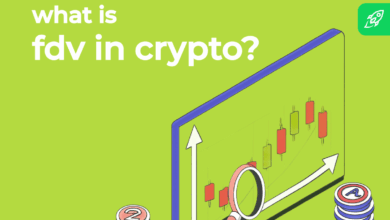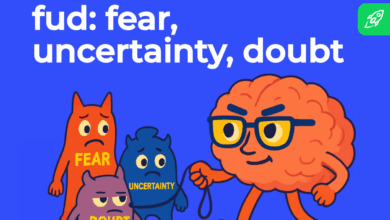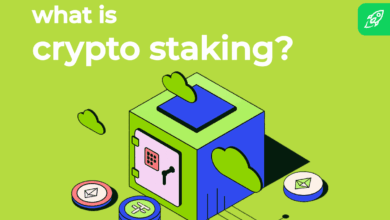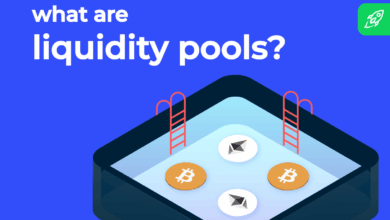What They Are and What They Are For

Not every crypto token is about speculation or investing. Some exist purely to make things work – from unlocking features in a decentralized app to rewarding users in a blockchain-based game. These are utility tokens: the behind-the-scenes drivers of functionality in Web3.
Before diving into the details, let’s take a look at what a utility token actually is, and why you should consider investing in them if you’re using, building, or just exploring the crypto space.
What is a Utility Token?
A utility token is a type of digital asset that gives you access to a product or service within a blockchain-based ecosystem. You do not own a part of the company when you hold a utility token. Instead, the token acts as a key, letting you use a specific function of a platform or application.
These tokens are common in decentralized apps (dApps), games, marketplaces, and decentralized finance (DeFi) projects. You can use them to pay for network fees, access premium features, or unlock exclusive content.
One well-known example is Basic Attention Token (BAT). You use BAT in the Brave browser to reward content creators and block ads while browsing the internet.
Utility tokens are not meant to be investments, but many are traded on exchanges, which gives them intrinsic market value. Some governments treat them differently from other types of tokens because they don’t represent ownership or profit rights.
What Makes Utility Tokens Different?
Utility tokens serve a specific function inside a blockchain ecosystem. Unlike traditional currencies, their value is tied to their utility, not to speculation or ownership. For example, Filecoin (FIL) lets you buy decentralized storage on the Filecoin network.
Projects often design their tokens to encourage participation. You might earn tokens for contributing to the network or spend them to get access to features that would otherwise be unavailable.
The token’s value increases as demand for the platform grows. This connection between usage and token demand is what sets utility tokens apart in the crypto space.
The Basics of Utility Tokens: How They Work
Utility tokens are digital assets programmed on blockchain networks using smart contracts. These contracts define how the tokens can be transferred, spent, or used within decentralized applications (dApps).
Unlike coins like Bitcoin or Ethereum, utility tokens do not run their own blockchains. They are hosted on existing networks such as Ethereum, BNB Chain, Solana, or Polygon. This allows for easy wallet integration and interoperability across platforms that support the token standard. Most utility tokens are built on popular blockchain networks like Ethereum or Solana, with one of the most common standards being ERC-20 for Ethereum-based tokens. This standard sets the rules for token supply, balance tracking, and transfers.
When you interact with a platform using a utility token, you’re typically calling a function of a smart contract. This contract may:
- Verify your token balance
- Deduct tokens to access a feature or service
- Record the interaction on-chain
For example, if a dApp charges a transaction fee in its native utility token, the smart contract checks whether you hold enough tokens before processing the request. This logic ensures that tokens act as gatekeepers to platform functionality.
Utility tokens typically do not have built-in rights like voting, staking, or yield-sharing unless explicitly programmed. Their functionality depends entirely on how the platform’s smart contracts are written.
Smart contract logic is immutable once deployed, which adds transparency but also risk. If the token logic is flawed, it can’t be changed easily. For this reason, many teams audit their token contracts before launch.
You can hold utility tokens in any wallet that supports their base standard, and you can interact with them using decentralized interfaces, browser extensions, or mobile apps.
Read more: Top crypto wallets.
Utility tokens are not designed to be investment contracts. Their primary purpose is to give you access to associated services, not profit rights or ownership. This is why they’re often referred to as user tokens – their value is based on their role within a system, not market speculation.
When demand for a service grows, so does the need for its token. This usage-based demand gives utility tokens a unique position in the broader cryptocurrency ecosystem.
5 Examples of Well-Known Utility Tokens
There are hundreds of examples of utility tokens out there – but not all of them get noticed. Here are the tokens that not only do a great job supporting their ecosystems, but also found success in terms of market cap.
Binance Coin (BNB)

BNB is the utility token of the Binance ecosystem, one of the largest cryptocurrency exchanges in the world. Utility token holders use BNB to pay for trading fees, access launchpad projects, and qualify for discounts on the platform. BNB also powers smart contract operations on BNB Chain, Binance’s own blockchain network.
BNB is a utility token based on the ERC-20 standard at launch, later migrated to Binance’s own chain. It was first distributed through an Initial Coin Offering in 2017.
Chainlink (LINK)

LINK is the utility token that powers Chainlink, a decentralized oracle network that connects smart contracts to real-world data. The token is used to reward users who provide reliable data to the network and to pay node operators for their services.
This utility token is essential for securing specific services like financial market feeds, weather data, or sports results. Chainlink allows token projects to build dApps that rely on external inputs without trusting a centralized source.
Filecoin (FIL)

FIL is the native utility token of the Filecoin decentralized storage network. It allows users to rent out unused disk space or pay for storage on the network. Utility token holders use FIL to store, retrieve, or manage data through smart contracts.
Unlike equity tokens or tokens backed by an underlying asset, FIL is used only for access to decentralized storage services. The system automatically matches clients with storage providers, and all transactions are verified on-chain.
The Sandbox (SAND)

SAND is a utility token used in The Sandbox, a blockchain-based metaverse where users build, own, and monetize virtual experiences. SAND is used for land purchases, avatar upgrades, in-game tools, and access to premium features.
The token also enables users to participate in governance and vote on key changes to the platform. It integrates with non-fungible tokens (NFTs), which represent assets like land, avatars, and equipment within the ecosystem.
BAT (Basic Attention Token)

BAT powers the Brave Browser, a privacy-focused web browser that blocks ads and trackers by default. Advertisers buy ads with BAT, and users earn tokens for viewing them. This creates a direct connection between attention and ad revenue.
BAT is a utility token based on Ethereum, not an investment contract or a claim to company profits. Instead, it functions as a tool to reward users and advertisers fairly for engagement on the platform.
Comparing Different Types of Cryptocurrency Tokens
Cryptocurrency tokens are not all the same. They serve different purposes depending on their design and use case. Understanding the differences helps you evaluate risk, compliance needs, and functionality.
Utility Tokens vs Security Tokens
Security and utility tokens differ in purpose, rights, and legal treatment. Security tokens represent ownership in a company, asset, or revenue stream. They are classified as financial instruments and must comply with securities laws.
Utility tokens and security tokens serve entirely different functions. Utility tokens provide access to specific services within a blockchain platform. You use them, not invest in them.
Security tokens often depend on an underlying asset – like real estate, equity, or a share in future profits. These tokens behave like traditional stocks or debt tokens, and issuing them usually requires regulatory approval.
Unlike security tokens, utility tokens are not tied to profit expectations. Their value comes from usage inside a platform, not from dividends or asset growth.
Read more: What are security tokens?
Utility Tokens vs Payment Tokens
Utility tokens give access to tools and services. You use them inside a closed ecosystem. You can think of them like prepaid credits or software licenses. Meanwhile, payment tokens are designed to be used like money. Their only function is to transfer value between users. They have no connection to a specific platform or app. Bitcoin is the best-known payment token.
Payment tokens are often compared to digital cash. They are not backed by tangible assets, but their value is market-driven. They do not unlock features or offer platform-specific benefits.
Utility tokens are issued by token projects that offer real products or networks. Payment tokens are more general and independent of any one platform.
Become the smartest crypto enthusiast in the room
Get the top 50 crypto definitions you need to know in the industry for free

Utility Tokens vs Governance Tokens
Governance tokens let holders vote on decisions in decentralized projects. This includes protocol upgrades, funding proposals, and fee structures.
Utility tokens instead focus on access and function. Governance tokens focus on control and decision-making within the platform.
Utility Tokens Use Cases
Utility tokens have many different use cases in crypto ecosystems. Here are some of the more common ones.
Unlocking Services
Utility tokens often grant access to products or features. On a token exchange, they might let you use trading tools, analytics, or premium functions.
Discounts and Rewards
Platforms can use utility tokens to incentivize users. You can get discounted fees, loyalty bonuses, or early feature access. Binance Coin offers discounted trading fees on Binance.
Gaming and NFTs
Utility tokens are central to blockchain gaming. You use them to buy assets, unlock characters, or earn rewards. In NFT platforms, they pay for listings or upgrades. AXS is used this way in Axie Infinity.
Decentralised Applications (DApps)
DApps use tokens to run internal actions. You need them to post, vote, or trigger smart contracts. They also help raise capital. Uniswap’s UNI token, for example, gives users voting power on protocol changes.
Advantages and Downsides of Utility Tokens
Considering investing in a utility token? Take a look at some of their pros and cons first:
Advantages
- Grant access to services and features within blockchain platforms
- Offer discounts, rewards, and governance rights to users
- Help projects raise capital without giving up equity
- Tradeable on decentralized exchanges for high liquidity and accessibility
Downsides
- Not designed for investment, but often speculated on
- Value depends entirely on platform adoption and user growth
- Token can lose all value if the project fails
- Regulatory uncertainty increases legal and financial risks
Remember to DYOR before making any financial investments.
How to Buy Utility Tokens?
You can buy popular utility tokens through most major centralized or decentralized exchanges. One simple way is through Changelly – a global veteran crypto exchange. We offer over 1,000 cryptocurrencies at fair rates and low fees. If you want to purchase utility tokens, you can always find the best deals on our fiat-to-crypto marketplace where we aggregate offers from a wide variety of different payment providers.
Are Utility Tokens Legal?
The legal status of utility tokens depends on how regulators classify them. In many cases, they are not considered securities, but this isn’t always clear.
In the United States, if a token meets the criteria of the Howey Test, it may be treated as a security under the Securities Act of 1933. That means the token is subject to the same regulations as traditional securities – including registration, disclosure, and compliance requirements.
If the token only grants access to a product or service and doesn’t promise profits, it may fall outside federal laws. But regulators often investigate projects that blur the line between utility and investment. The SEC has previously taken action against multiple token issuers who claimed their tokens were utilities, but has become more lax in their judgement after Trump took office.
Final words: Should You Use Utility Tokens?
Yes, you should — if you use a platform that depends on them.
Utility tokens make sense when they unlock real features or give you value, such as discounted fees, exclusive content, or governance rights. They’re essential to many blockchain technology platforms. But they are not a guaranteed investment, and their value comes from usage, not speculation.
Whether you buy utility, governance, or security tokens depends on your goals. If you want access and functionality, utility tokens are a good fit. But if you’re investing or voting in a protocol, you might look at other types of tokens.
FAQ
Are utility tokens the same as cryptocurrencies like Bitcoin?
Technically, they are also cryptocurrencies. However, they serve a different purpose. Bitcoin is a standalone cryptocurrency used as a store of value or medium of exchange. Utility tokens are tied to a blockchain project and used to access features or services within that ecosystem.
Are utility tokens a good investment?
Utility tokens are not designed as investments, but they can increase in value if the project gains users. However, they don’t offer fractional ownership or profits like security tokens. Their value comes from usage, not speculation.
Is ETH a utility token?
ETH is primarily the native token of the Ethereum network. While it powers transactions and smart contracts, it’s not considered a typical utility token because it plays a broader role in blockchain technology. It also acts as a gas fee currency.
Does XRP have utility?
Yes, XRP is used to facilitate cross-border payments and liquidity between financial institutions. Its utility is focused on speed and cost-efficiency in international transactions, especially within RippleNet
Is Solana a utility token?
SOL is the native token of the Solana blockchain. It has utility because it’s used to pay for transaction fees and run smart contracts. Like ETH, however, it’s more than just a utility token — it’s also key to network security through staking.
Is XLM a utility token?
Yes, XLM is used on the Stellar network to transfer value and reduce transaction spam. It helps users move money across borders quickly and cheaply.
Can utility tokens increase in value over time?
Yes, they can — if the platform they support grows. Since they’re often limited in supply, increased demand for tokens issued by popular platforms can push up the price. But there’s no guarantee.
Do I need a special wallet to store utility tokens?
You need a wallet that supports the token’s blockchain. For example, ERC-20 tokens require an Ethereum-compatible wallet. Always verify the token standard before storing.
Are utility tokens regulated?
Sometimes. In many countries, utility tokens are not subject to the same regulations as securities, but this depends on their use. If a token is sold with profit expectations, it might be reclassified under federal laws.
Can I use utility tokens outside their platforms?
Generally, no. Most utility tokens only function within the platform that issued them. You can trade them on exchanges, but their actual utility remains tied to a specific blockchain project.
How can I tell if a utility token is legitimate?
Check the project’s whitepaper, team, and use cases. Look for transparency about how tokens are used and how many tokens were issued. A legitimate token is backed by real functionality and active development.
Disclaimer: Please note that the contents of this article are not financial or investing advice. The information provided in this article is the author’s opinion only and should not be considered as offering trading or investing recommendations. We do not make any warranties about the completeness, reliability and accuracy of this information. The cryptocurrency market suffers from high volatility and occasional arbitrary movements. Any investor, trader, or regular crypto users should research multiple viewpoints and be familiar with all local regulations before committing to an investment.





